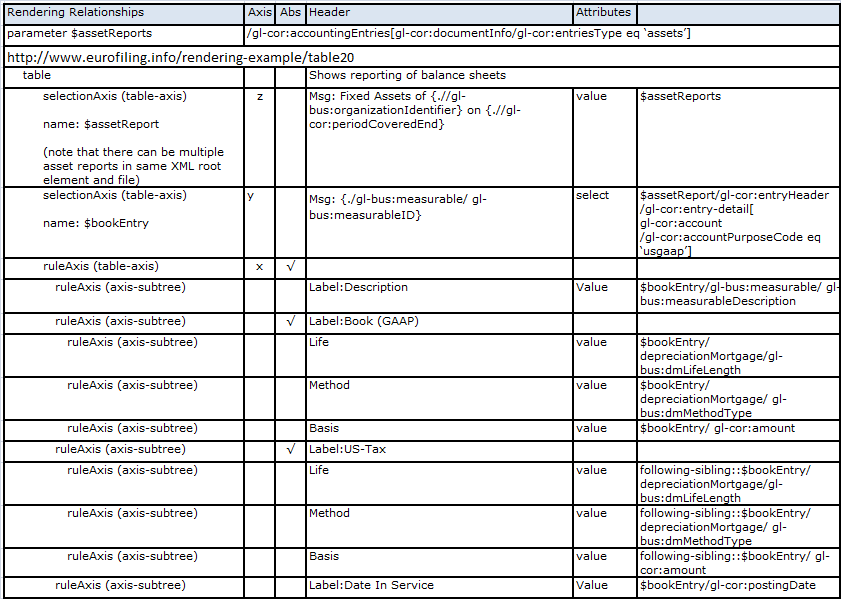1 Introduction
Presentation linkbases, according to the XBRL 2.1 specification, establish relationships between items in a taxonomy for presentation purposes. For many years, this resource has allowed taxonomy authors to arrange sets of concepts into hierarchical representations, helpful to convey better the meaning of those financial concepts as part of a group, rather than as isolated, individual elements. These relationships have served other purposes, such as the creation of user interfaces, or the rendering of instance documents. Simple balance sheets and profit & loss statements are a good example.
The release of XBRL Dimensions introduced a new degree of flexibility in the design of taxonomies. It enabled the modelling of complex data and richer relationships. However, under this specification, a financial concept could be expressed as the combination of several elements (primary item plus a variable number of pairs dimension / members) rather than as a single item. This new facility surfaced an important limitation in the capabilities of XBRL to express presentations or views of multidimensional models. This has been partially solved in different projects using different approaches.
The purpose of the table linkbase is to provide taxonomy authors with a standard way to define views of the concepts defined in XBRL taxonomies that overcomes most of the limitations of the presentation linkbase. Rather than providing a simple arrangement of concepts as a hierarchy, it enables the definition of tables with multiple axes. The components of these axes are not limited to individual items; instead, they can be defined in terms of a combination of dimensions, time period references, units, entities or any other property that can be used to identify the financial facts represented by taxonomies.
As a consequence, a table linkbase provides a better understanding of the concepts modelled in taxonomy files by combining them with other concepts as part of tables. A table represents a subset of the complete model provided by a taxonomy, and thus it could be used to represent reporting requirements (for instance, the subset of data required by a supervisor); to represent a view of the data for analytical purposes; or to present an instance document in a certain way.
Though formatting artefacts are not part of the table linkbase, tables are intended to be the foundation of the rendering specification. Tables identify the data to be rendered, its order and some basic graphical arrangement. This specification will be complemented by the rendering specification to allow the possibility of specifying accurately the way an instance document ought to be rendered and the way its content should be formatted.
This overview provides examples and explanations as an introduction to the syntax and semantics of the table linkbase. The accompanying specifications provide the feature descriptions in a rigorous manner for implementation and validation.
2 Class Models
The figures below provide a model of XBRL table classes, showing the mapping of classes to the table linkbase specifications Figure 1 and a model showing how XBRL Tables can, as an example of their use, participate in XBRL rendering semantics Figure 2.
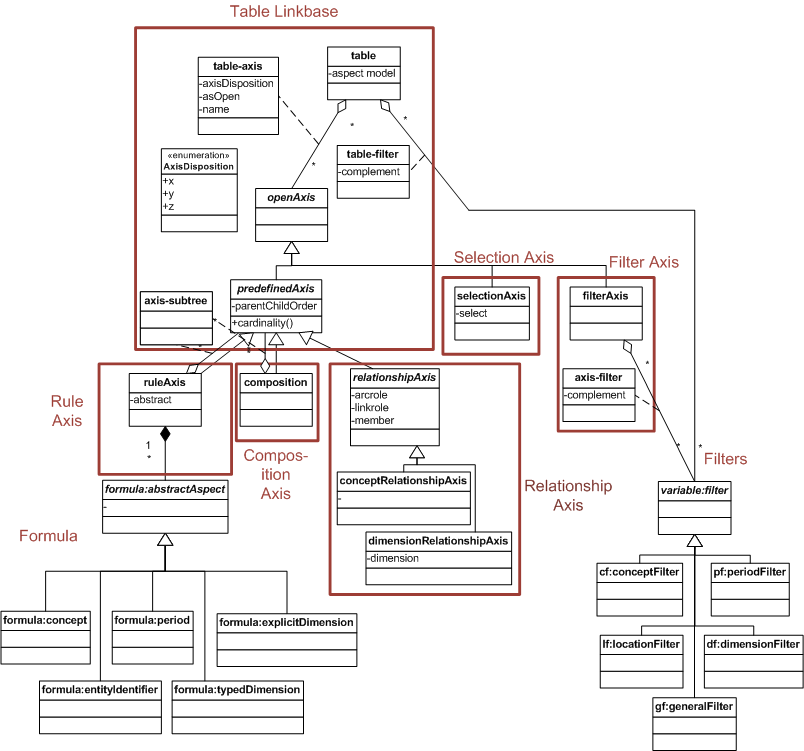
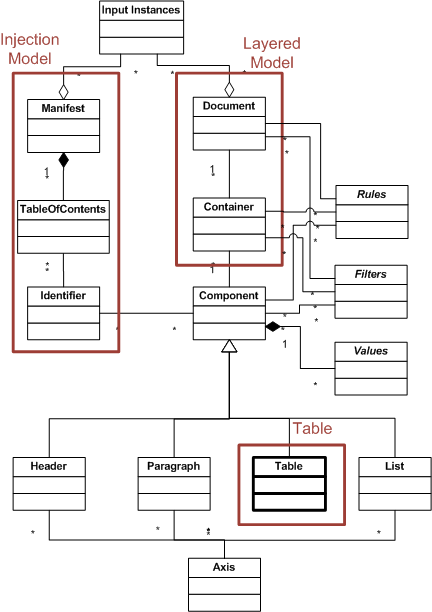
3 Use Case Examples
The use cases are categorized as follows, and correspond to test variations for reference:
- Fixed predefined tables
- Fixed table with an open axis
- Financial reports
- Global Ledger (XBRL-GL) reports
3.1 Fixed predefined tables
Corresponds to XBRL examples of Eurofiling forms, usually represented by spreadsheet workbooks with multiple worksheet tables, each in a fixed format.
-
Simple table, two rows represent primary items, two columns represent members of one dimension


-
Same but columns represent two dimensions with fixed assignment of members to columns,
both columns dimension D = member d0, column 1 dimension E = member e1 and second column dimension E – member e2
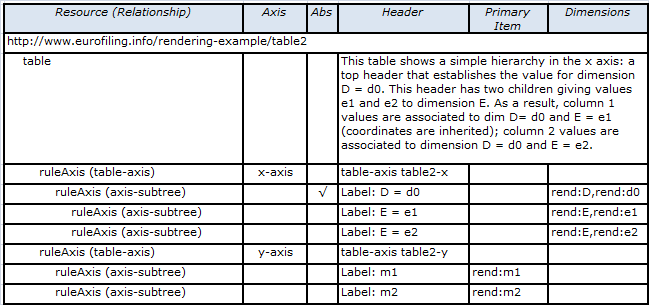
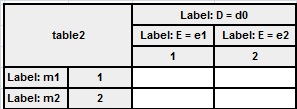
-
Similar to example 2, but three columns, first has no value for dimension E (E is not in the context,
could be default or absent), may represent an aggregation for columns 2 (E = e1) and 3 (E = e2).
Uses a non-abstract aspect rule member for D, which causes the row-spanned column header appearance
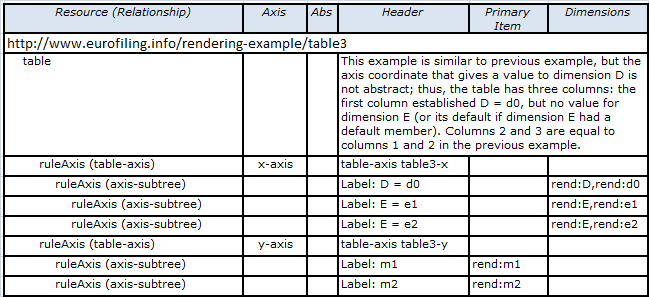

-
An alternative way to represent the column for no E value, by an explicit coordinate with
no E-dimension rule, instead of a non-abstract D coordinate member rule.
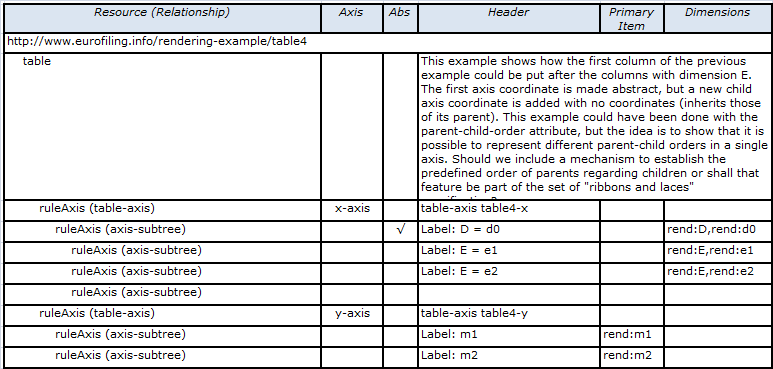

-
Demonstrates coordinate inheritance and override, second column overrides dimension D inherited from first column coordinate member
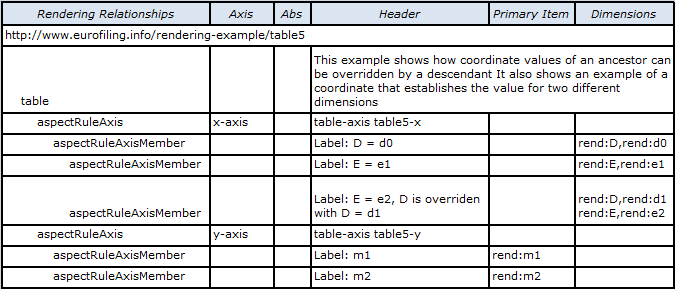
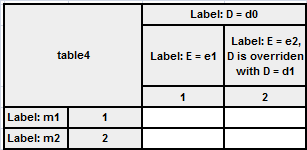
- Introduces use of z-axis (for a third dimension, F)
- Z-axis has two values (causing Cartesian product with x/y axes)
- Introduces nested coordinate members in the z-axis.
- Introduces two separate z-axes (so that the Cartesian cross-product of their members represent the coordinates on the z-axis).
- Same as 9 but the two z-axes are merged into a single z-axis specifying each of the Cartesian cross product members as separate coordinate members.
- A transposed two row, two column example with primary items in columns and dimensional coordinates in rows, and dimension D is explicitly removed in the second row coordinate member.
- Two x-axes (of dimensions), causing the columns to represent the cross product columns of both dimensions, e.g., first pair of columns for value of D = d1 with two E-value columns, and then the second pair of columns for value of D = d2 with each E-value columns.
- Similar but two y-axes, first a primary item coordinate, and nested second a dimension coordinate.
3.2 Fixed table with an open axis
Corresponds to XBRL examples of Eurofiling forms where a range of rows or columns represent a variable number of entries (here distinguished by a typed dimension value).
- Open axis example. Rows are primary items, column is a typed dimension value (example is a simple typed dimension with a string value). A rendered table from an instance would have a dynamic number of columns, to represent the typed dimension values that have either primary item represented by a fact. If this were used as an entry form, the string value of the typed dimension would require an editable column header cell corresponding to the string value of the dimension.
- Two x-axes, one predefined and one open. The table shows the top five ranked country dimensions for primary items (in rows). The first coordinate (column) is predefined, having typed rank value 1, second has rank 2, etc. The second coordinate for each column is the country dimension, an open Axis using a filter for the country dimension. Causes the country having rank one to be in second column header row of column 1, country of rank two in second column header row of column 2, etc.
-
A deposits-on-hand table in local currency and equivalent in Euros:
The y axis represents a primary item that reports deposits on hand in various currencies, each of which is a dimension.
The y axis specifies the primary item and a relationship axis for the currency dimension values.
Each fact is reported in the local currency, to be shown in the first column, and in equivalent Euros, to be shown in the
second column. The first column has the local unit (non-Euro) and the second the Euro-equivalent (in EUR units), these
facts are otherwise aspect equal to each other.
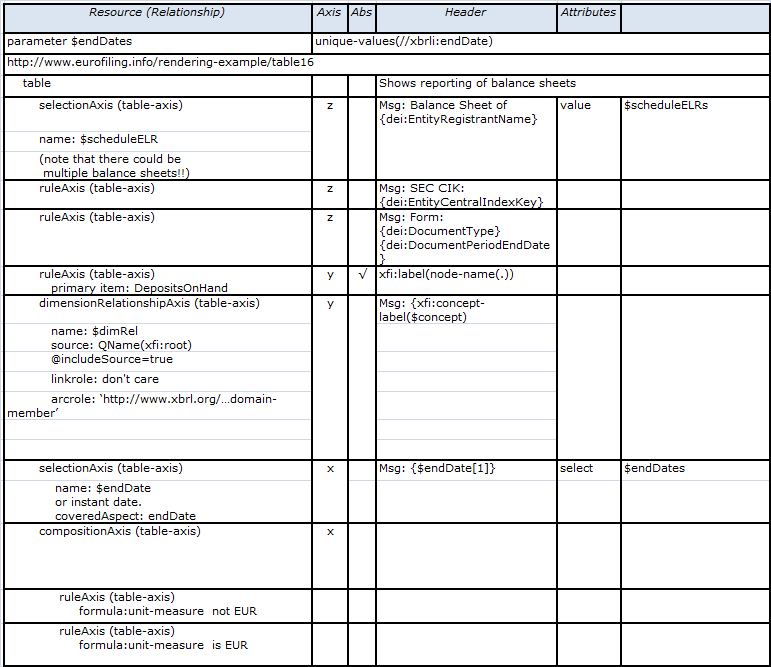
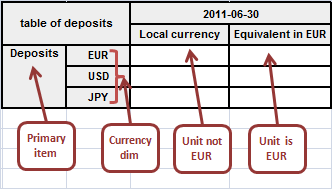
3.3 Financial Reports
Corresponds to US-GAAP or IFRS filings.
The y-axis (rows) are:
- a selection axis representing the extended link role (schedule) for the balance sheet, and
- a concept relationship axis representing concept hierarchy according to a linkbase (presentation used for 2010 examples), within the schedules (extended link roles) of the presentation linkbase according to the desired schedule display.
- A balance sheet. Columns represent periods.
Rows represent presentation linkbase hierarchy of concepts in the extended link role for balance sheet.
In this example the extended link role is known in advance.
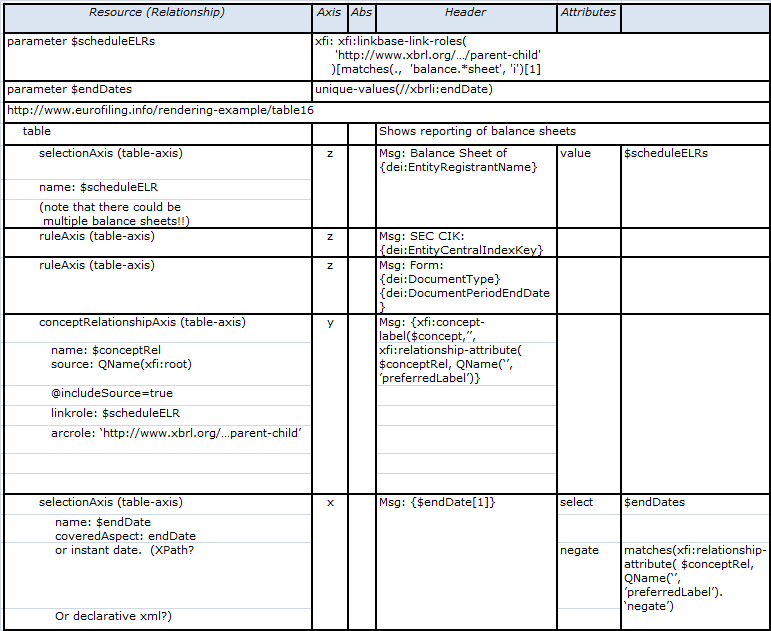
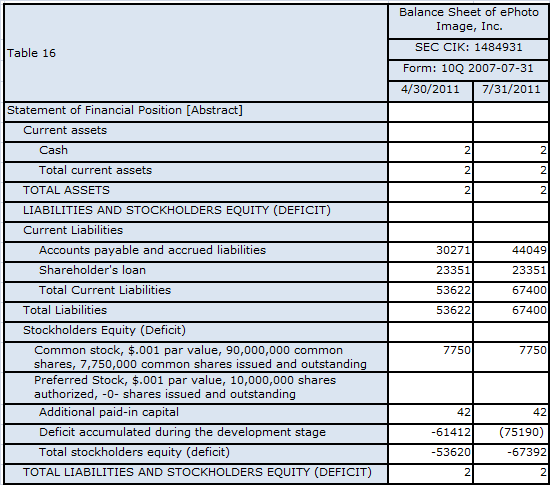
- A Risk-Return instance (partial) showing multiple relationship axes rendered.
The y-axis provides the presentation linkbase. In the sample RR instances provided, standard link roles were used, so dynamic discovery (the case of US-GAAP filings) is not required.
The x-axis provides two dimensions in two axes (Cartesian products of member possibilities, with non-occupied combinations elided, because only some make sense.)
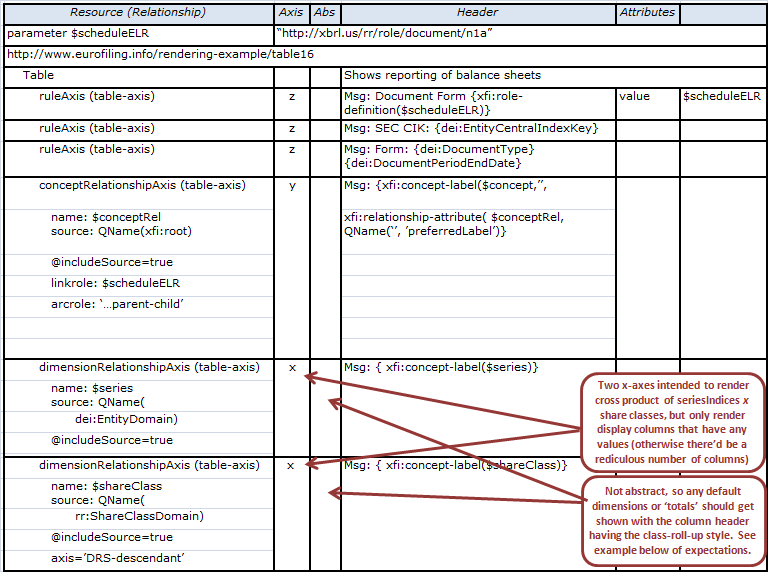
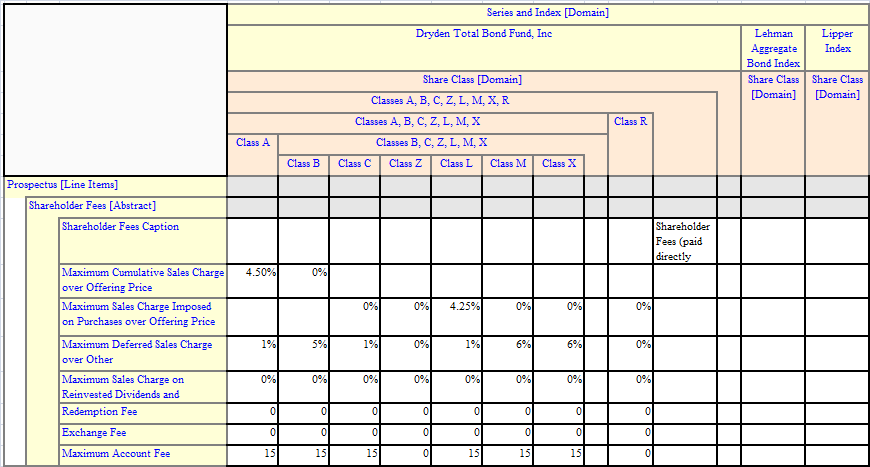
-
A report on unused contexts in instance document (This is not fact reporting in the traditional sense, however it is required by US-GAAP, IFRS, and SBR-NL)
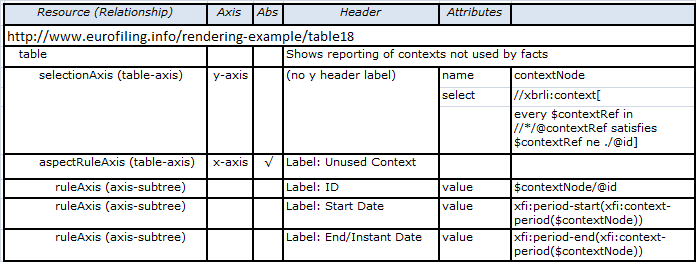
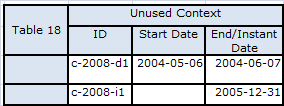
3.4 Global Ledger Reports
Requires an open axis for the rows to identify participating tuples from the GL instance
that have the required contents, based on their location. Uses selectionAxis to identify these tuples.
- A Global Ledger report of a trial balance (showing ending balance of XII website sample file BP_trial_balance.xml).
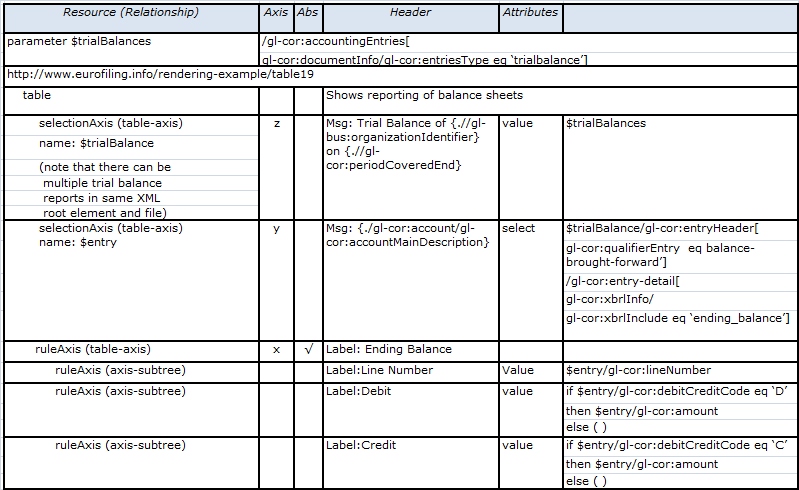
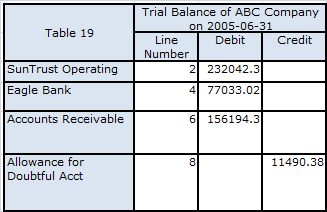
- A Global Ledger report of assets (showing book and tax depreciations of XII website sample file BP_FixedAssetList.xml).
